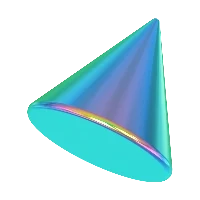
Using Sentinel 2 data for vegetation
Posted on September 24, 2024
3 minutes
Sentinel-2 is a constellation of twin satellites, Sentinel-2A and Sentinel-2B, launched by ESA as part of the Copernicus program. These satellites are equipped with multispectral sensors capable of capturing high-resolution optical imagery of the Earth's surface. The sensors onboard Sentinel-2 observe the Earth across 13 spectral bands, ranging from visible to shortwave infrared wavelengths, with spatial resolutions ranging from 10 to 60 meters.
Vegetation Monitoring Applications
-
Vegetation Health Assessment Sentinel-2 data enables the assessment of vegetation health by measuring various vegetation indices, such as the Normalized Difference Vegetation Index (NDVI) and the Enhanced Vegetation Index (EVI). These indices quantify the amount and vigor of vegetation based on the reflectance of different spectral bands. By analyzing changes in these indices over time, researchers and land managers can monitor the health and productivity of vegetation.
-
Land Cover Classification Sentinel-2 data facilitates accurate land cover classification, including the identification and mapping of different vegetation types. By exploiting the spectral signatures of various land cover classes, such as forests, croplands, grasslands, and wetlands, machine learning algorithms can be trained to classify and map vegetation cover over large areas. This information is invaluable for land use planning, biodiversity conservation, and ecosystem management.
-
Forest Monitoring and Management Forests play a critical role in global carbon cycling and biodiversity conservation. Sentinel-2 data enables the monitoring of forests at various spatial and temporal scales. By tracking changes in forest cover, structure, and dynamics, stakeholders can assess deforestation, degradation, and reforestation activities. Additionally, Sentinel-2 data facilitates the estimation of forest biomass and carbon stocks, essential for climate change mitigation efforts and sustainable forest management.
-
Crop Monitoring and Precision Agriculture In agriculture, timely and accurate information about crop health and productivity is essential for optimizing yields and resource use. Sentinel-2 data supports crop monitoring and management through the detection of crop stress, disease outbreaks, and nutrient deficiencies. By analyzing vegetation indices and spectral signatures, farmers can make informed decisions regarding irrigation, fertilization, and pest control, thereby improving agricultural productivity and sustainability.
-
Water Stress Assessment Vegetation is highly sensitive to water availability, making it an important indicator of drought and water stress. Sentinel-2 data can be utilized to monitor vegetation water content and stress levels by analyzing changes in spectral reflectance, particularly in the near-infrared and shortwave infrared bands. This information is critical for drought monitoring, water resource management, and early warning systems in agricultural and natural ecosystems.
Conclusion Sentinel-2 data offers unparalleled capabilities for vegetation monitoring and management across various sectors. By harnessing the power of remote sensing technology, we can gain valuable insights into the health, dynamics, and ecosystem services provided by vegetation. As we continue to face environmental challenges such as climate change and land degradation, the utilization of Sentinel-2 data is indispensable for informed decision-making and sustainable development.
So, let's embrace the wealth of information provided by Sentinel-2 and work towards a greener, more resilient future!













